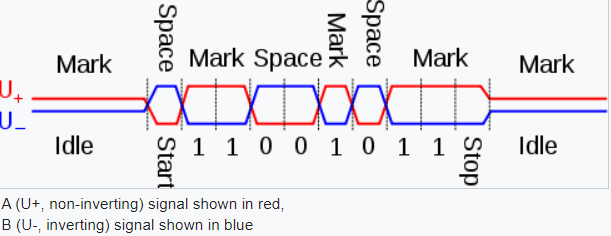In the story below, I have introduced the idea of differential signaling step by step, in the form of an imaginary story. I have illustrated it by a series of CircuitLab experiments (I think this will be more interesting to the OP than only lengthy verbal explanations). To make my explanations more impactful and "low-level", I have not used the more sophisticated Sweep DC Simulation and Time-Domain Simulation but only the simple Live DC simulation. Also, I have visualized the DC voltages by ordinary DC voltmeters. This is a concept (well-known for a long time) and therefore we do not need to draw detailed electronic circuits; a few voltage sources and voltmeters are enough to show the idea.
1.Single-ended configuration
The simplest way to connect a voltage source to the input of an amplifier is by a single wire; the other is the ground. The problem with this connection is that if unwanted disturbances (voltages) are induced in the signal (left) wire, they are added to the input voltage in series, according to KVL. For example, in the schematic below, 100 mV induced voltage (noise) is added to 1 V input voltage; as a result, 1.1 V are applied to the voltmeter. Note the unusual way of drawing - the input is at the bottom rather than the conventional left, and the output is at the top rather than the right.
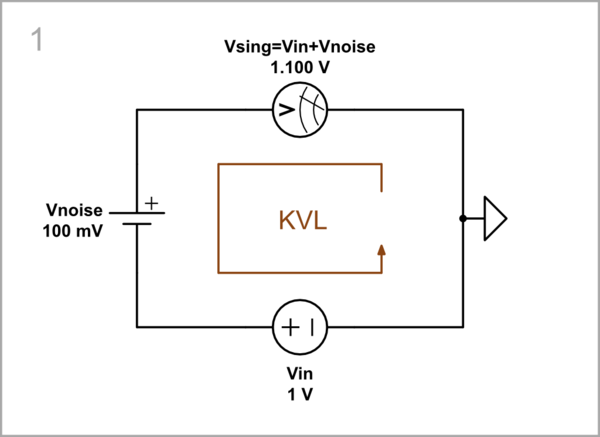
simulate this circuit – Schematic created using CircuitLab
2.Differential configuration
2.1.Conceptual circuit
The solution is to make the two wires equal; then the two induced voltages VnoiseL and VnoiseR will be oppositely connected in the loop, and will cancel each other out. To do this, we can split the input voltage source Vin into two sources - Vin1 and Vin2, and ground the middle point. The ("floating") amplifier input will receive a differential voltage Vd = VnoiseL + Vin1 - Vin2 - VnoiseR = Vin1 - Vin2. We can name this clever trick passive compensation and use, when needed, in the future.
So the general idea is to transmit over two wires the difference between two input voltages as an input signal.

simulate this circuit
2.2.Common-mode
Vin1 = 5 V, Vin2 = 5 V: From the schematic above, we see that if the two input voltages are equivalent (like the noise voltages), the result is a zero differential voltage (it remains so even if we start changing them simultaneously in the same way and stop in the middle - 5 V). So we can suppress uniform changes of input voltages (so-called "common mode") in the same way as we suppressed noise voltages.
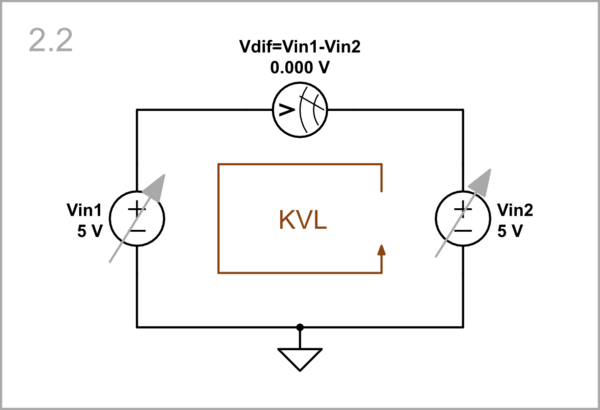
simulate this circuit
To have an input signal, we need to create a difference between the two input voltages. We can do it in several ways as follows:
2.3.Single-ended differential input
First, we can change only one of the input voltages and keep the other constant.
2.3.1.Left input: If we start with Vin1...
Vin1 = 6 V, Vin2 = 5 V: ... we can first increase it with 1 V above 5 V...
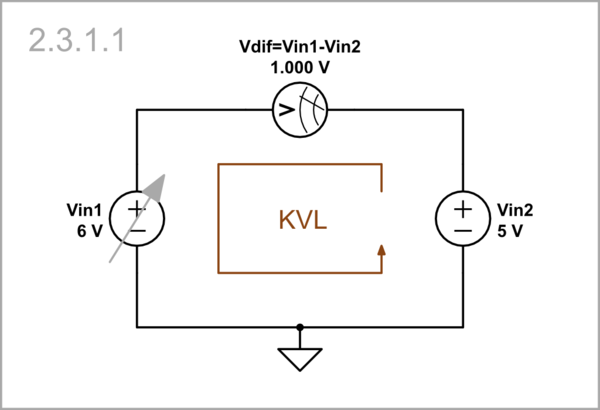
simulate this circuit
Vin1 = 4 V, Vin2 = 5 V: ... then decrease it with 1 V below 5 V.
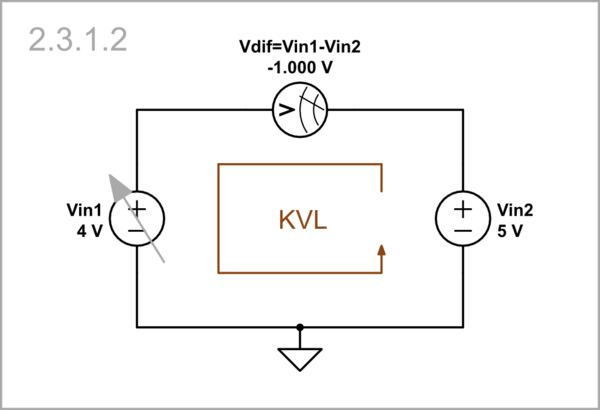
simulate this circuit
2.3.2.Right input: Then we continue with Vin2...
Vin1 = 5 V, Vin2 = 6 V: ... first increasing it with 1 V above 5 V...
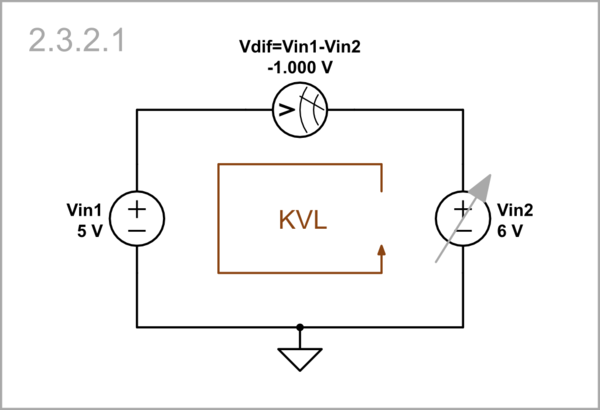
simulate this circuit
Vin1 = 5 V, Vin2 = 4 V: ... and then decreasing it with 1 V below 5 V.
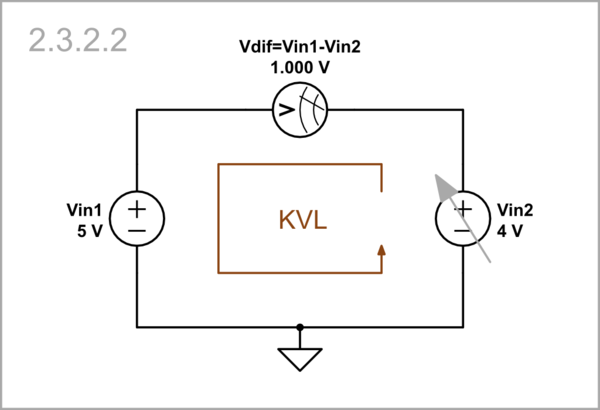
simulate this circuit
2.4.Fully differential input
We can make this differential configuration completely symmetrical if we simultaneously change both input voltages in different directions...
Vin1 = 6 V, Vin2 = 4 V: ... first Vin1 with 1 V up and Vin2 with 1 V down...

simulate this circuit
Vin1 = 4 V, Vin2 = 6 V: ... then Vin1 with 1 V down and Vin2 with 1 V up.
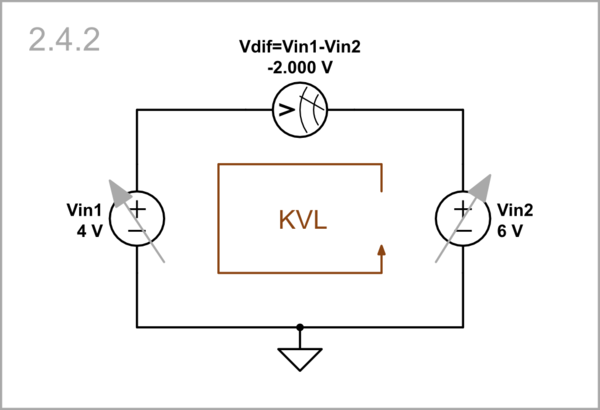
simulate this circuit
2.5.Separate common-mode input sources
Vin1 = 1 V, Vin2 = -1 V: We can imagine that the common-mode voltage is produced by two identical 5 V voltage sources VcomL and VcomR respectively connected in series to the input sources (e.g., Vin1 = 1 V and Vin2 = -1 V). Note that both total single-ended input voltages "VcomL + Vin1" and "VcomR + Vin2" are positive.
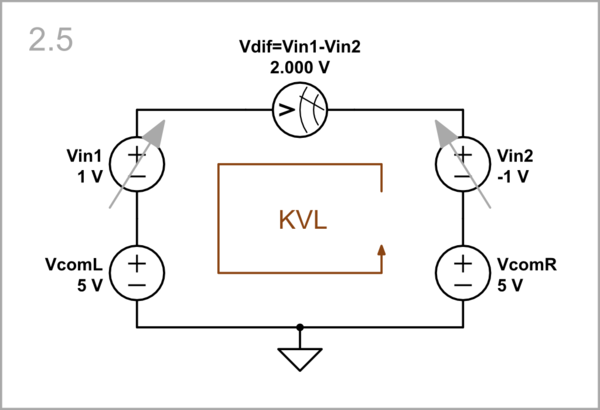
simulate this circuit
2.6.Pure differential mode
If the common-mode voltage is zero, there is a pure differential mode. Now one of the input voltages drops below zero -
Vin1 = 1 V, Vin2 = -1 V: ... Vin2...
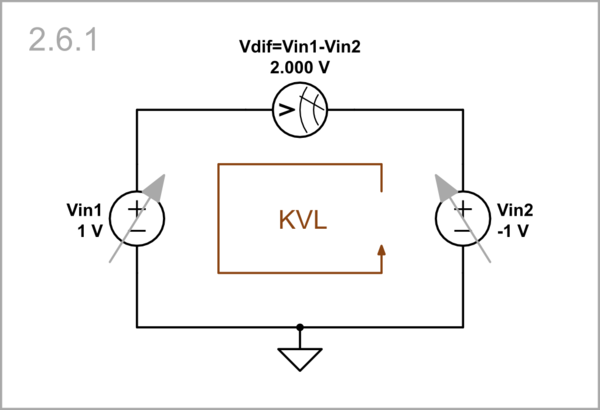
simulate this circuit
Vin1 = -1 V, Vin2 = 1 V: ... or Vin1.
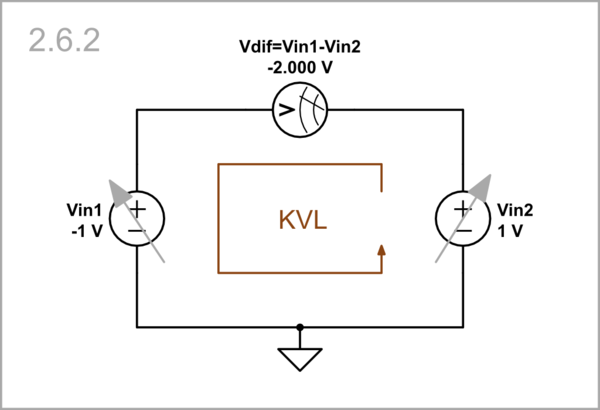
simulate this circuit














